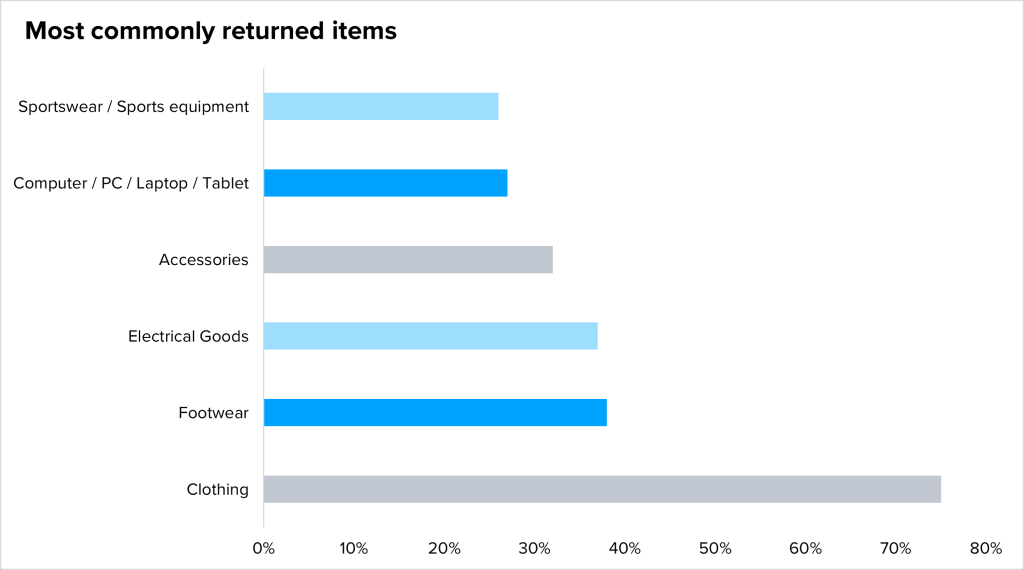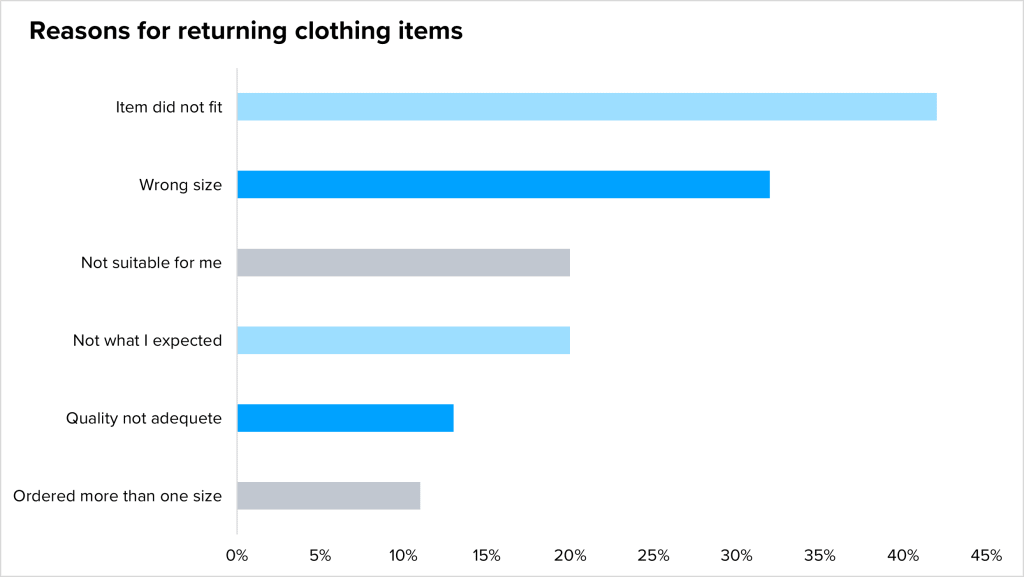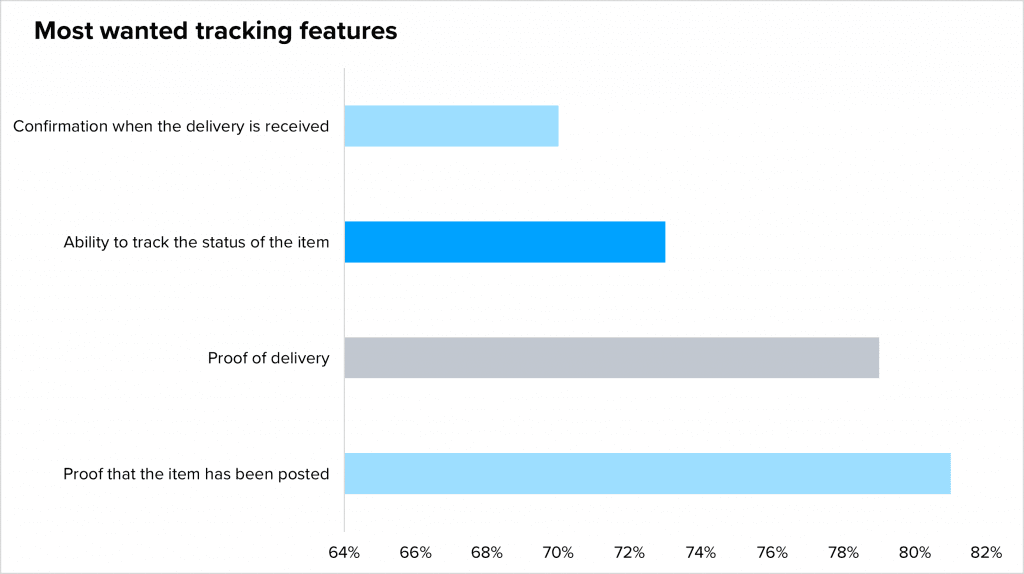
Returns have always been a fact of life for retailers. Some have treated them as a selling point, others have tried to pretend they weren’t happening. Today, there are no two ways about it: returns must be taken seriously.
Online shopping has changed consumer behaviour. Shoppers expect the trust they invest by purchasing online to be reciprocated by a returns policy that gives them a quick, easy refund if they’re not happy with their purchase when it arrives. With some types of goods, notably clothing, shoppers are in the habit of buying numerous items with the intention of sending most of them back, just as they would if they were in-store taking items to the fitting room. The living room has become the new fitting room.
In a recent survey conducted by Trinity McQueen, 75% of respondents who had purchased clothing online said they had recently returned an item. And as shoppers become more attuned to sending items back, they become increasingly aware – and demanding – of the reverse logistics process.

Firstly, they expect returns to be free. Indeed, 47% of respondents in the Trinity McQueen survey said they would not shop with a retailer again if they charged for returns. Secondly, they expect the process to be easy. That applies to every stage of the journey, from finding returns information at the point of sale to knowing when the money has been refunded. Thirdly, they expect it to be quick.
Turning refunds into opportunities
Such customer expectations may look like nothing but trouble for retailers, especially those without a returns policy fit for the modern retail landscape. But for those prepared to accept the challenge as part of their overall value proposition, a situation that could be written off as costly, time-consuming and complex to administer actually presents retailers with an opportunity to gain a competitive advantage, boost brand reputation, build stronger customer relationships and gather valuable marketing insight.
For example, by gathering information on the reasons for returns, you can mitigate for those reasons and begin to reduce the scale of your returns requirement. The table below shows the top five reasons for returning goods in general.

This gives some useful insight as to what you need to address to reduce your returns, eg you might want to look at why so many faulty items are going out. But within each retail category, there is the opportunity to drill down further.

With this sort of detail coming back with returned goods, you can create accurate portraits of each individual customer and use them to personalise your marketing and improve the fit and suitability of their future purchases.
How to profit from returns
Once you’ve accepted that returns are part of the bigger retail picture, there are several steps you need to take to make sure you’re giving customers what they want.
- Cement your returns policy – Being clear about when and how you will accept returns is the foundation to putting in place a process that meets customer expectations and keeps costs to a minimum. Look at your competitors’ policies and those of retailers in other sectors to see where you might be able to deliver more. Build the returns policy into your business plan and make sure you are making the necessary allowances to resource it sufficiently.
- Communicate clearly – According to the Trinity McQueen survey, 74% of shoppers expect to find returns information on the retailer’s website. As you’re now using your returns policy as a selling point, it’s important that you communicate it to customers. The more they have to go looking for it, the more likely they are to give up and shop elsewhere. Communication is very important throughout the sale and return journey. You need to make sure that every link in your reverse logistics supply chain is properly informed of its role, while customers want clear guidance about which returns label to use, they want to be able to track their return and they want to be notified of a refund once their item has been returned.
- Facilitate returns efficiently – With goods coming in from diverse and unpredictable sources, then needing to be sorted, assessed, prepared for disposal or resale, and refunded, reverse logistics are a lot more complex than the supply stream and need to be resourced accordingly. A third party logistics partner who can demonstrate experience and expertise in handling returns can be a major asset in this respect. As well as handling the receipt of goods returned to the warehouse and all that that entails, they can make sure every transaction is updated on your system and offer advice on making the process easier for your customers. The Trinity McQueen survey reports that 60% of shoppers would be less likely to shop with a retailer again following a difficult returns experience. They want to receive returns labels with their item, or a downloadable label sent by email, they like resealable packaging and they want to be able to track their returns because they feel reassured by having evidence that they have sent the item back.

- Use the data to improve your service – Returns present a valuable opportunity to gather customer feedback. When a customer buys from you and is happy with what they receive, you may never hear from them again. But with returns, customers are actively extending their relationship with retailers and you can use this to gather insight about their preferences. Knowing what items they return and why will enable you to build a more accurate picture of each customer, allowing you to personalise your marketing and hone your offer. This should help to reduce the need for returns in the long term. So make sure you include some sort of data gathering mechanism in your returns process.
Treat returns with the same importance as deliveries
Consumers have become accustomed to using free returns services as part of their whole buying process and, with online shopping, they judge a brand as much on the quality of its returns experience as on the quality of its goods and deliveries. The ingredients of a successful returns policy can be summed up in 5 points:
- Make it free
- Make it easy
- Make it quick
- Communicate it clearly
- Use the feedback to improve
A return is the final touchpoint between customer and brand in the retail journey and so leaves the longest lasting impression. Get it wrong and you could lose a customer for life; get it right and they’ll come back to you time after time.
Your Details
More insights >
The ILG Awards: The Winners are Announced
This weekend we gathered at the beautiful East Sussex National for the annual ILG Awards for Excellence to celebrate our wonderful colleagues and teams here.
How to Make Your Order Fulfilment More Sustainable
As brands become increasingly dedicated to operating sustainably, it’s vital that their supply chain partners are equally environmentally conscious to create an aligned vision for their customers.

